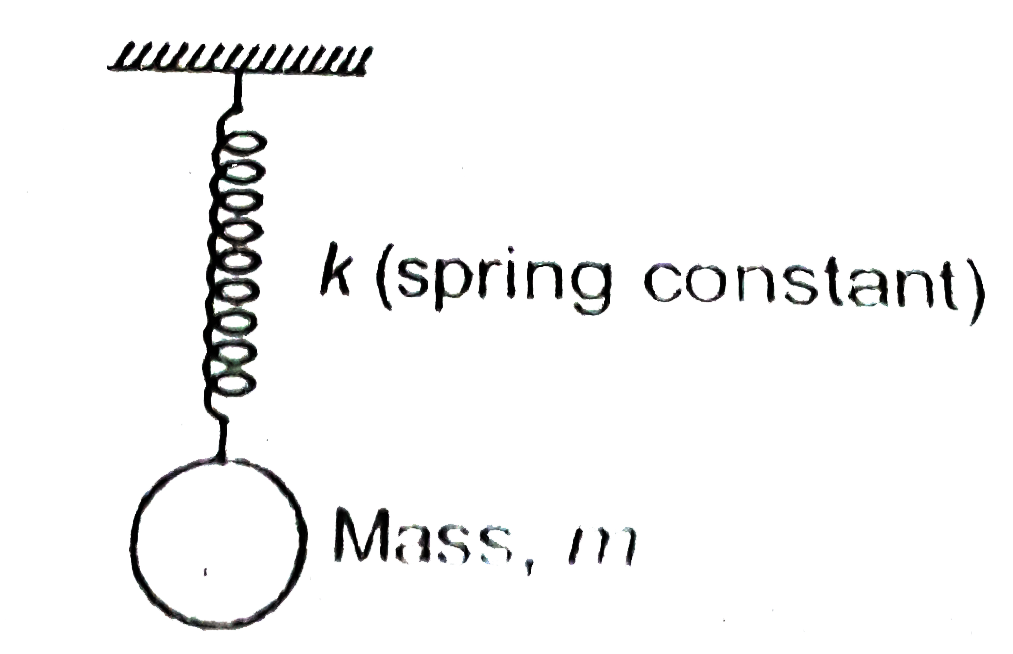A spring scale is used to weight beans on an elevator. How will the readings for a given amount of beans change when the elevator is (a) going down with constant velocity,(b) moving with a constant downward acceleration less than g, (c) moving upward with a constant velocity, (d) accelerating upward with an acceleration a. What happens in above cases if we use a beam balance.
Step by step video & image solution for A spring scale is used to weight beans on an elevator. How will the readings for a given amount of beans change when the elevator is (a) going down with constant velocity,(b) moving with a constant downward acceleration less than g, (c) moving upward with a constant velocity, (d) accelerating upward with an acceleration a. What happens in above cases if we use a beam balance. by Physics experts to help you in doubts & scoring excellent marks in Class 11 exams.
Updated on:21/07/2023Topper's Solved these Questions
- NEWTONS LAWS OF MOTIONBOOK - PHYSICS GALAXY - ASHISH ARORACHAPTER - NEWTONS LAWS OF MOTIONEXERCISE - Conceptual MCQs
23 Videos
- NEWTONS LAWS OF MOTIONBOOK - PHYSICS GALAXY - ASHISH ARORACHAPTER - NEWTONS LAWS OF MOTIONEXERCISE - Numerical MCQs
90 Videos
- NEWTONS LAWS OF MOTIONBOOK - PHYSICS GALAXY - ASHISH ARORACHAPTER - NEWTONS LAWS OF MOTIONEXERCISE - Practice Exercise 2.6
1 Videos
- LINEAR MOMENTUM & ITS CONSERVATIONBOOK - PHYSICS GALAXY - ASHISH ARORACHAPTER - LINEAR MOMENTUM & ITS CONSERVATIONEXERCISE - exercise 1.3
3 Videos
- RIGID BODIES AND ROTATIONAL MOTIONBOOK - PHYSICS GALAXY - ASHISH ARORACHAPTER - RIGID BODIES AND ROTATIONAL MOTIONEXERCISE - Unsolved Numerical
63 Videos
Similar Questions
A simple pendulam 2m long is arranged in an elevator. What will be its time period when the elevator is (a) moving up with uniform velocity 2 m/s, (b) moving up with uniform acceleration 2 ms−2, (c ) going down with uniform acceleration 2 ms−2?
View SolutionA simple pendulum of length l is suspended throught the ceiling of an elevator. Find the time period of small oscilations if the elevator a. is going up with an acceleration a0. b. is going down with an acceleration a0 and c. is moving with a uniform velocity.
View Solution
Knowledge Check
Each of the following system begins moving upwards with a constant acceleration. Select these cases in which quantity will change due to this upward acceleration:
Atime period of simple pendulum.Bfraction of floating body submerged in a liquidCtime period of a spring block system.Dpressure on the base of a container containing liquid.In Q 63 above , if the elevator moves upward with a constant acceleration , the apparent weight of the person is
Aless than his true weightBequal to his true weightCmore or less than his true weightDmore or less than his true weightAn elevator and its load weigh a total of 1600 kg. Find the tension T in the supporting cable when the elevator, originally moving downward at 20 m/s is brought to rest with constant acceleration in a distance of 50 m.
A2024×102NB1024×104NC2024×104ND2024×10−4N
A lift of mass 400 kg is hung by a wire. Calculate the tension in the wire when the lift is (i) at rest (ii) moving upwards with a constant velocity of 1ms−1 (iii) moving upwards with an acceleration of 2ms−2 and (iv) moving downwards with an acceleration of 2ms−2.
View SolutionTime period of a spring pendulum when lift moves downward with constant velocity v is T second. When the lift moves upward with constant acceleration=g3 , the time period will be

View SolutionDiscuss the apparent weight of a man in a lift when (i) kift is moving upwards with a constant speed (ii) lift is accelerated uniformly downwards .
View SolutionA spring weghing machine inside a stationary life reads 50 kg when man standds on it. What would happen to the scale reasing if the life is moving upward with (i) costant velocity, and (ii) constant acceleraton ?
View SolutionAn elevator and its load weigh a total of 166 kg. Find the tension T in the supporting cable when the elevator, originally moving downwards at 20m/s is brought to rest with constant acceleration in a distance of 50 m.
View Solution
